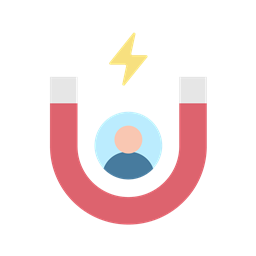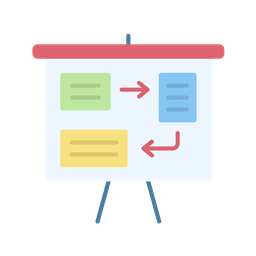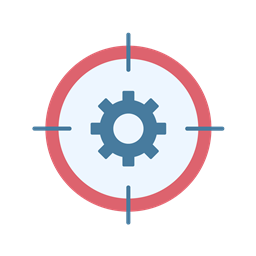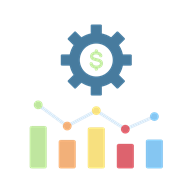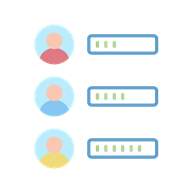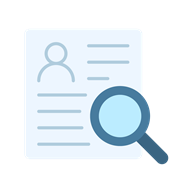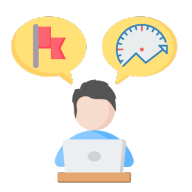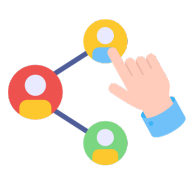In today's fast-paced, data-driven landscape, can any decisions be truly effective without the power of data behind them? In the dynamic realm of Human Resources (HR), employee data reigns supreme, serving as the bedrock of essential processes. But what if we continue to gather and store this precious resource in scattered silos, neglecting the potential of a unified, cohesive approach? Will this fragmented strategy empower HR professionals to excel in talent management, or will it become a roadblock to effective talent reviews and development?
For organizations still lacking a comprehensive talent management tool, navigating the treacherous waters of data errors and inaccuracies can be both costly and time-consuming. According to a recent study by Ceridian, a staggering 38% of organizations are grappling with the challenges posed by manual data entry errors and outdated tracking methods.
Picture this: relying solely on qualitative feedback or comments and ignoring the goldmine of quantitative employee data. Or imagine having data on an employee's personal details, skills, and budget but no seamless system connecting these dots. In such scenarios, the struggle to identify and retain top talent could become a financial nightmare. The Society for Human Resource Management (SHRM) reinforces this notion, revealing that employee turnover costs can soar to a staggering 100% to 200% of their annual salary.
However, there's a shining beacon of hope in the world of HR: centralizing data for talent management, supported by a slew of compelling research:
- According to SHRM, a whopping 70% of HR professionals believe that a centralized HR Information System (HRIS) enhances data accessibility, transforming employee data into a powerful tool for strategic decision-making.
- Deloitte's insights unveil that 69% of high-performing organizations wield data-driven insights to make smarter talent decisions, resulting in more streamlined recruitment and talent development strategies.
- Centralized talent data is the secret sauce for improved talent development and succession planning, as per Bersin, a division of Deloitte, which found that organizations with centralized talent data are a staggering 26% more effective in identifying and nurturing leaders.
Now, let's get down to brass tacks and uncover the practical steps to turbocharge your talent management with a data-driven edge.
Step 1: Setting Clear Objectives and Crafting a Winning Roadmap
Kickstart your journey by charting crystal-clear objectives for centralizing HR data, aligning them seamlessly with your organization's overarching business goals and HR strategy. Take stock of your current HR data landscape, pinpointing data storage locations, existing systems, and data management practices.
Step 2: The Right Tools and Partners for the Job
Invest time in finding a robust Talent Management system that not only centralizes employee data but also takes your talent game up a notch. It should automate Talent Review and Employee and Leadership Development processes while flexing its data analytics muscles. Here's the nitty-gritty:
- Seamless Integration: If you're locked into existing systems, choose a talent management system that plays nice with them.
- Fortify Data Security: Banish the notion of storing employee data in unwieldy Excel sheets. Ensure data security and legal compliance.
- Empower Employees: Enable self-service features in your HRIS, allowing employees to access and update their own information, express their career aspirations, and chart out individual development plans in tandem with their managers.
- Embrace Analytics: Make sure your talent management system comes equipped with robust reporting tools because, in the words of the MoSCOW method, analytics is a "Must."
Step 3: Data Integration: One Page to Rule Them All
Bid adieu to the tangled web of complex, disconnected Excel sheets. Visualize all your employee data, talent insights, and budgetary information harmoniously displayed on a single canvas. Let this unified view supercharge your HR processes:
- Centralized Employee Data: Manage all your employee data efficiently from one platform.
- Manager as Coaches: Empower your managers to take charge of employee development by providing them with real-time data and tools for regular feedback, STAR assessments, and note-taking.
- Talent Review Mastery: Identify and nurture High-Potential (HIPO) employees with ease by harnessing a comprehensive data pool encompassing performance metrics, educational records, skills assessments, feedback, and more.
- Strategic Talent Matrix: Place your top talents on the coveted nBox matrix and fine-tune your talent strategy through collaborative review sessions.
Step 4: Leverage Data Reporting Tools Aligned with KPIs
Harness data reporting tools that align perfectly with your Key Performance Indicators (KPIs). Keep a vigilant eye on metrics such as HIPO rates, employees in need of development plans, low performers, and organizational skill gaps.
In summation, centralizing employee data within a unified system and adopting a data-driven mindset are pivotal to supercharging your talent management endeavors. These practices empower HR professionals to make data-backed decisions that are not only advantageous for the workforce but also for the organization at large. They enable organizations to identify, nurture, and retain top talent while mitigating the risks associated with leadership gaps and talent shortages. In the data-driven universe, trust and integrity in data should always be our guiding principles, as wisely advocated by Peoplise.

